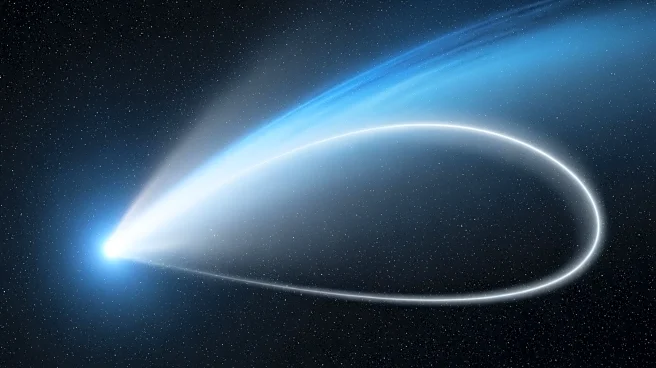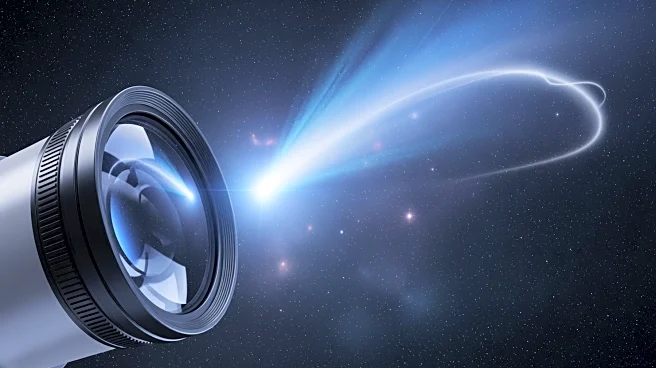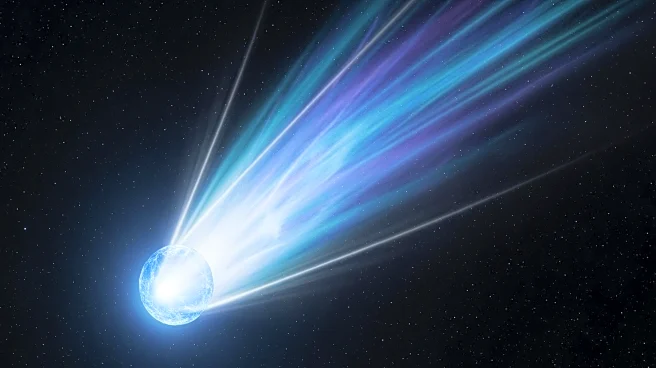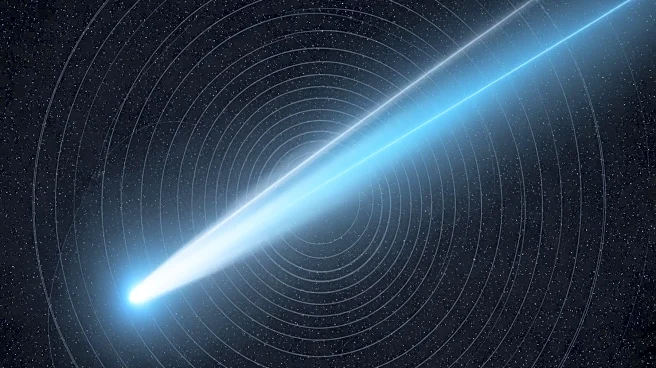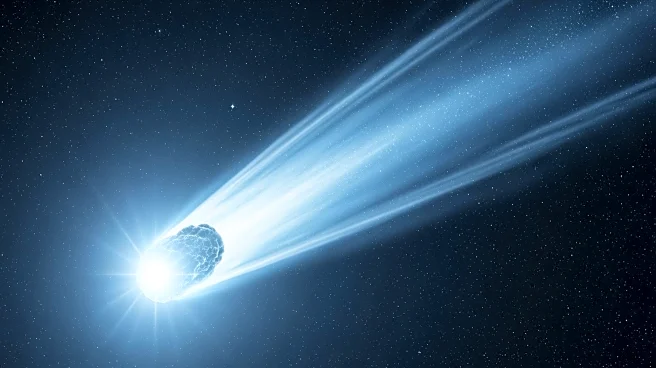What's Happening?
A new image of the interstellar comet 31/ATLAS has revealed a dramatic reappearance of its ion tail, which is now longer, brighter, and more structured. This observation was captured by the Virtual Telescope
Project using robotic telescopes in Manciano, Italy. The comet's ion tail had previously vanished after passing near the Sun, baffling astronomers. The new image, taken on November 10, shows the tail despite the comet's low position in the sky and interference from a 61% illuminated Moon.
Why It's Important?
The reappearance of the ion tail of comet 31/ATLAS provides valuable insights into the behavior of interstellar objects and their interactions with solar radiation. This discovery is significant for astronomers and astrophysicists studying the dynamics of comets and the solar system. Understanding these phenomena can enhance knowledge of cosmic events and contribute to the broader field of space exploration and research.
What's Next?
Astronomers will likely continue to monitor comet 31/ATLAS to gather more data on its behavior and characteristics. Further observations could provide additional insights into the processes affecting interstellar comets and their interactions with solar forces. This ongoing research may lead to new discoveries about the nature of these celestial bodies and their impact on the solar system.


